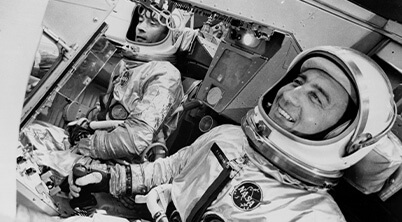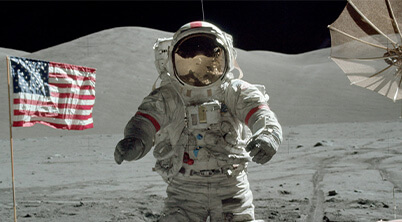START HERE
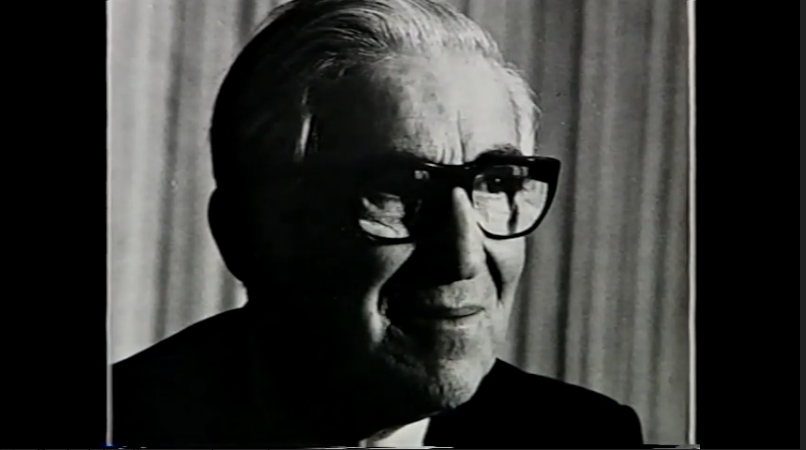
1946
Zucrow arrives at Purdue
Maurice J. Zucrow (Ph.D. ’28) joins Purdue’s faculty as a professor of gas turbines and jet propulsion. He becomes the first professor at an American university to teach a course on jet and rocket propulsion, and writes the field’s first textbook. The “Rocket Lab” he founded at Purdue is now the largest academic propulsion lab in the world.
Zucrow Labs Today1947
Armstrong enrolls
Neil Armstrong (BSAE ’55) enrolls at Purdue at age 17. After serving as a naval aviator in 1951-52 during the Korean War, Armstrong returns to Purdue and graduates in 1955 with a degree in aeronautical engineering.
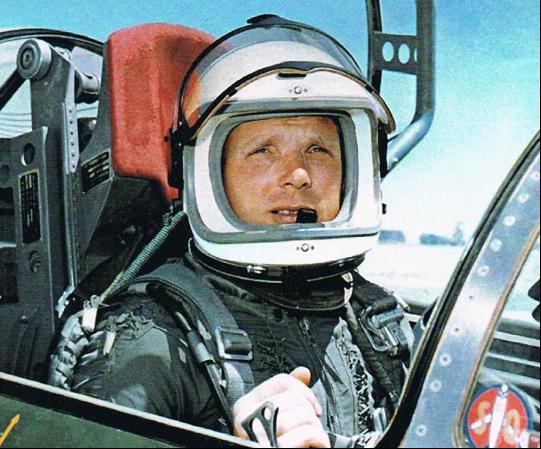
September 7, 1956
The Proto-Astronauts
Iven Kincheloe Jr. (BSAE ’49) flies the experimental Bell X-2 twenty miles above the earth, the first pilot to ever accomplish the feat. He was nicknamed “America’s No. 1 Spaceman,” and had the inside track to early astronaut training, before a test flight crash took his life in 1958. Kincheloe was one of several proto-astronauts from Purdue, including Henry C. Gordon, who trained alongside Neil Armstrong in the Dyna-Soar program; and Pete Knight, who received Astronaut Wings for flying the X-15 at Mach 6.7 (4,520 mph), still the fastest manned aircraft flight in history.
April 9, 1959
Grissom joins Mercury 7
Virgil “Gus” Grissom (BSME ’50) becomes a member of the Mercury Seven — the group of astronauts selected to make the United States’ first attempt at manned spaceflight.
June 16, 1961
Outlining Kennedy’s vision
Bill Fleming (BSAE ’43) and his task force produce “A Feasible Approach for an Early Manned Lunar Landing.” The document outlines the tasks, personnel and time frame necessary to achieve President John F. Kennedy’s goal of putting a man on the moon by the end of the 1960s.
More on the “Roadmap to the Moon”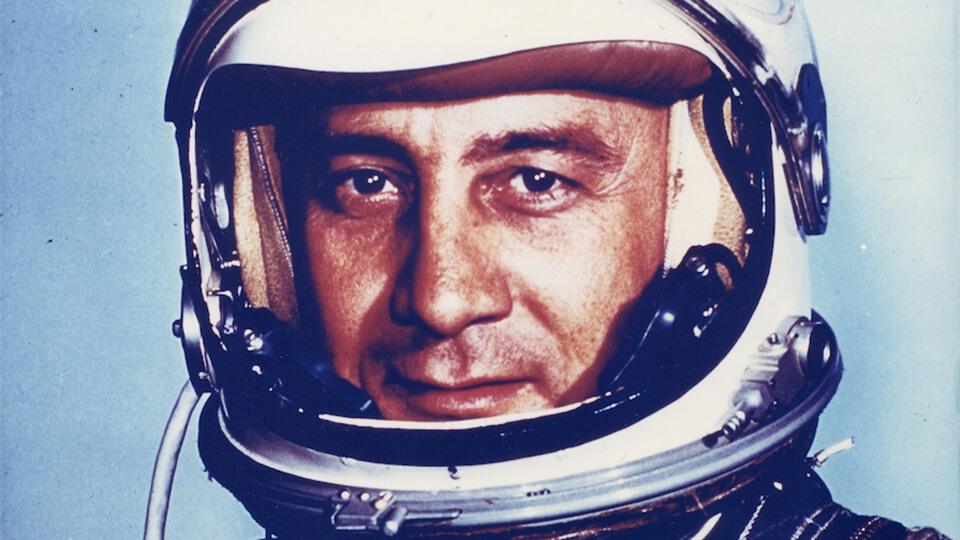
July 21, 1961
Grissom travels to space
Gus Grissom becomes the second American to travel into space — and third person of any nationality — when he pilots the Liberty Bell 7 spacecraft on a 15-minute suborbital flight as part of Project Mercury.
March 23, 1965
Gemini 3 mission
Gus Grissom serves as command pilot on Gemini 3, the first crewed Project Gemini flight. Grissom and John Young make three revolutions of Earth during a mission that lasts nearly five hours. The mission makes Grissom the first NASA astronaut to travel into space twice.
March 16, 1966
First successful docking
During the Gemini 8 mission, Neil Armstrong performs the first successful docking of two vehicles in space. Armstrong becomes the first American civilian to travel in orbit (having resigned his Navy commission six years earlier).
June 5, 1966
Second American spacewalk
Eugene Cernan (BSEE ’56) becomes the second American to walk in space during the Gemini 9 mission.

Jan. 27, 1967
Apollo 1 fire
Three astronauts — including Purdue alums Gus Grissom and Roger Chaffee (BSAE ’57) — are killed in a fire during prelaunch testing for the Apollo 1 mission. In 1968, Purdue named two campus buildings, Grissom Hall and Chaffee Hall, in memory of the two Boilermaker astronauts.
May 22, 1969
Cernan sets the stage
During the Apollo 10 mission, Eugene Cernan pilots the Snoopy lunar module to within approximately 8 miles of the lunar surface. This final test run sets the stage for Neil Armstrong and Apollo 11 to make the first lunar landing two months later.
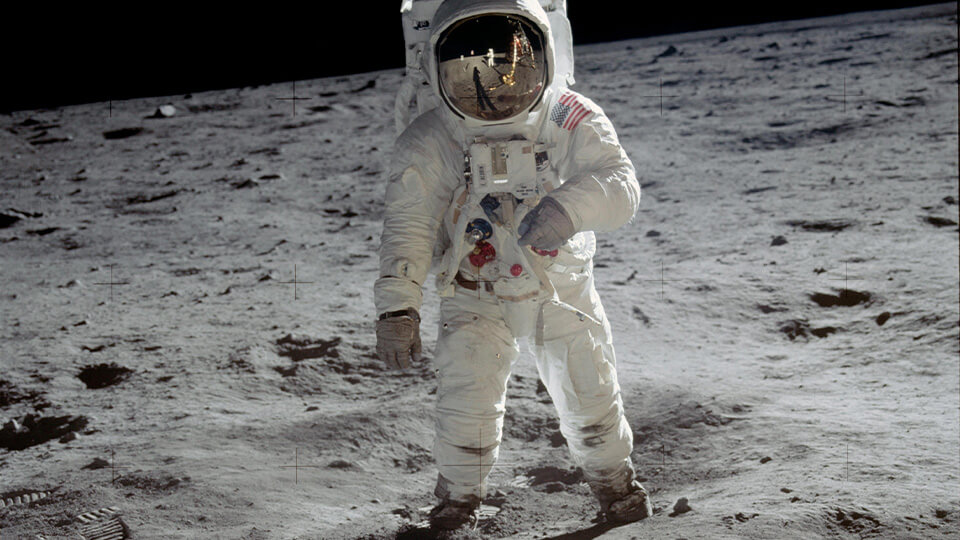
July 20, 1969
Armstrong’s giant leap
During the Apollo 11 mission, Neil Armstrong becomes the first human to set foot on the lunar surface, speaking the famous words, “That’s one small step for a man, one giant leap for mankind.”
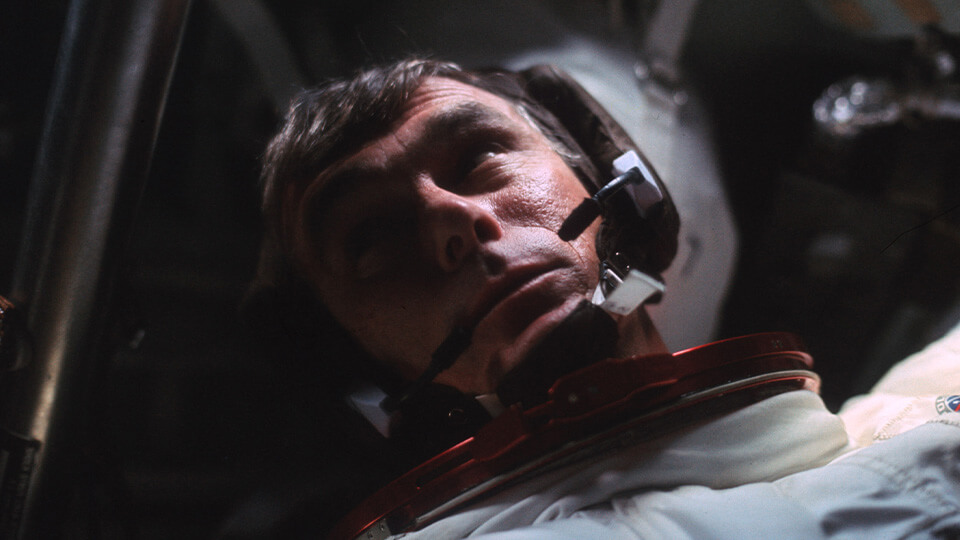
Dec. 14, 1972
Cernan walks on the moon
Eugene Cernan becomes the most recent human to set foot on the moon. As commander of the Apollo 17 mission, Cernan is responsible for a number of record-setting achievements (including three extravehicular activities) during three days of surface activity.
Aug. 30, 1984
First industry-sponsored astronaut
Charles Walker (BSAAE ’71) becomes the first industry-sponsored astronaut to fly on the space shuttle when he participates in the STS-41-D mission. A McDonnell Douglas employee, Walker operates the company’s continuous-flow electrophoresis device (which he helped develop and has a patent for) during three shuttle missions.

Nov. 26, 1985
Ross makes first spaceflight
Jerry Ross (BSME ’70, MSME ’72) launches aboard his first space mission, STS-61-B. When he retires from NASA in 2012, Ross is the only person to have made seven spaceflights and ranks among history’s most experienced spacewalkers (58 hours, 18 minutes spent on nine spacewalks).
Oct. 18-23, 1989
Deploying Galileo probe
Donald Williams (BSME ’64) serves as a commander and Michael McCulley (BSMSE ’70, MSMSE ’70) as pilot on the STS-34 mission. Their crew successfully deploys the Galileo probe to travel to Jupiter.
April 24-29, 1990
Deploying Hubble telescope
Loren Shriver (MSAAE ’68) commands the STS-31 mission, which deploys the Hubble Space Telescope. The Hubble provides a deep view into space that has led to numerous breakthroughs in astrophysics. In the process, Shriver commands the Shuttle to an altitude of 386 miles, the farthest altitude ever flown by the Shuttle.
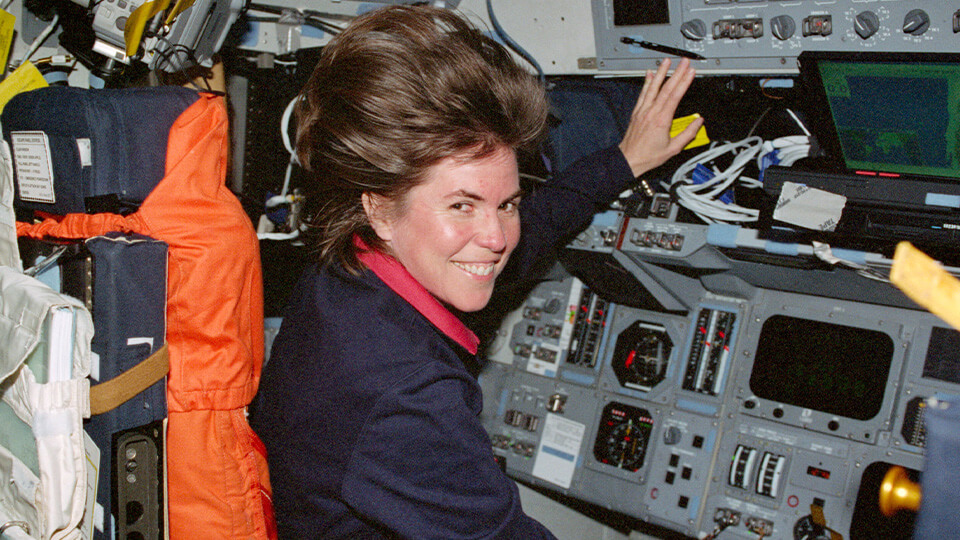
June 21, 1993
Voss becomes first Purdue woman in space
Janice Voss (BSES ’75) becomes the first Purdue woman to travel to space, conducting biomedical and material science experiments in the first Spacehab module during the STS-57 mission.
July 13, 1995
Weber is Purdue’s second female astronaut
Mary Ellen Weber (BSChE ’84), Purdue’s second woman astronaut, launches on the STS-70 mission, the first of her two NASA spaceflights.
May 19-29, 1996
Casper’s record-setting final mission
John Casper (MSAAE ’67) commands his final space shuttle mission, STS-77, during which his crew performs a record number of rendezvous sequences. Casper logs more than 825 hours in space across four shuttle missions.
Dec. 15, 1996
A commencement message from space
John Blaha (MSAAE ’66) sends a special message via satellite from the Russian space station Mir to Purdue’s fall commencement graduates — one of whom is his daughter Carolyn. Blaha participates in five NASA missions, including as commander on STS-58, widely recognized as NASA’s most successful Spacelab flight.
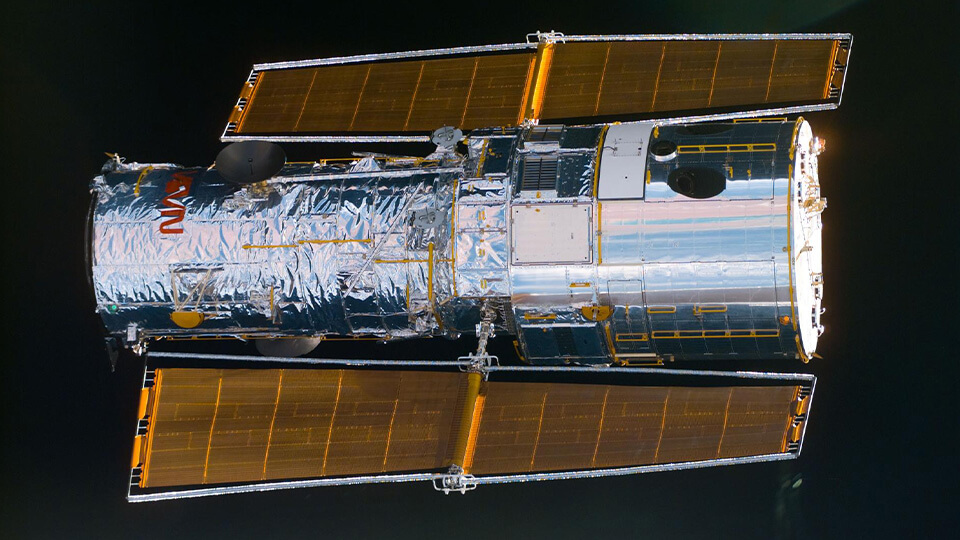
Feb. 15-17, 1997
Pushing Hubble even higher
During STS-82 (his fourth space shuttle mission), Gregory Harbaugh (BSAAE ’78) participates in two spacewalks (totaling 14 hours, 1 minute) while doing upgrades and repairs on the Hubble Space Telescope. Afterward, the telescope is redeployed and reaches its highest orbit ever.
Nov. 4, 1997
First American to vote from space
While aboard the Russian space station Mir, David Wolf (BSEE ’78) votes in a local election in Houston, Texas, becoming the first American to cast a vote from space. Wolf is aboard Mir for 128 days during the mission — one of his four missions where he totals 41 hours, 17 minutes over seven spacewalks.
Feb. 11-22, 2000
Mapping the Earth’s surface
During STS-99 (her fifth and final NASA mission), Janice Voss and her crewmates map more than 47 million square miles of the Earth’s land surface using synthetic aperture radar, creating the most comprehensive three-dimensional map of the Earth’s surface to date.
Feb. 7-20, 2001
First person of Korean ancestry in space
While piloting Space Shuttle Atlantis on STS-98, Mark Polansky (BSAAE ’78, MSAAE ’78) becomes the first person of Korean ancestry to travel into space. Polansky serves on three NASA missions between 2001-09, each of which helps build and service the International Space Station.
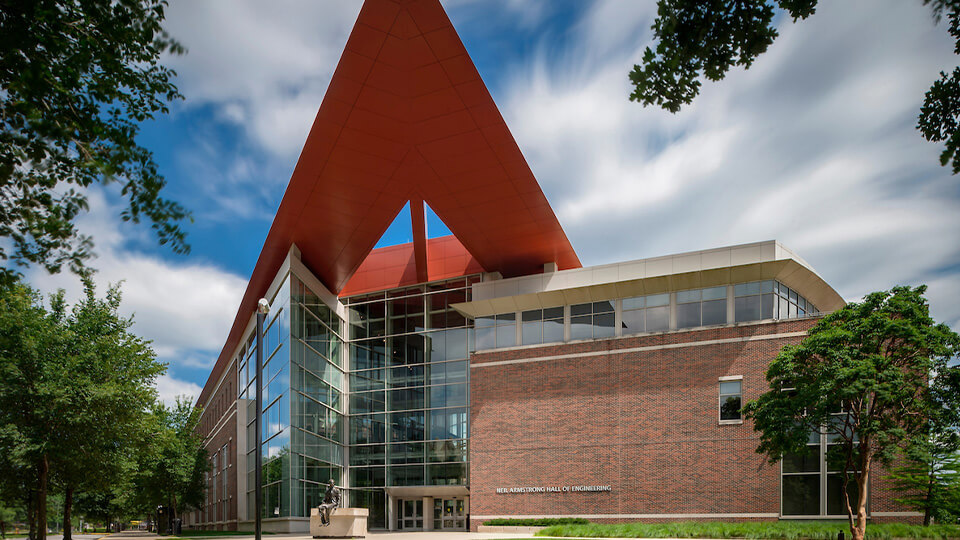
Oct. 27, 2007
Neil Armstrong Hall of Engineering opens
Purdue dedicates the Neil Armstrong Hall of Engineering, the flagship of the College of Engineering. Sixteen Purdue astronauts, including Neil Armstrong and Eugene Cernan, attend the dedication ceremony.
Watch the grand opening with Neil ArmstrongMay 14-18, 2009
Feustel’s spacewalks help Hubble
Andrew Feustel (BSEAS ’89, MSEAS ’91) performs three spacewalks totaling 20 hours, 58 minutes during the STS-125 mission to the Hubble Space Telescope that extends and improves the observatory’s capabilities. In three NASA missions, Feustel totals nine EVAs (61 hours, 48 minutes).
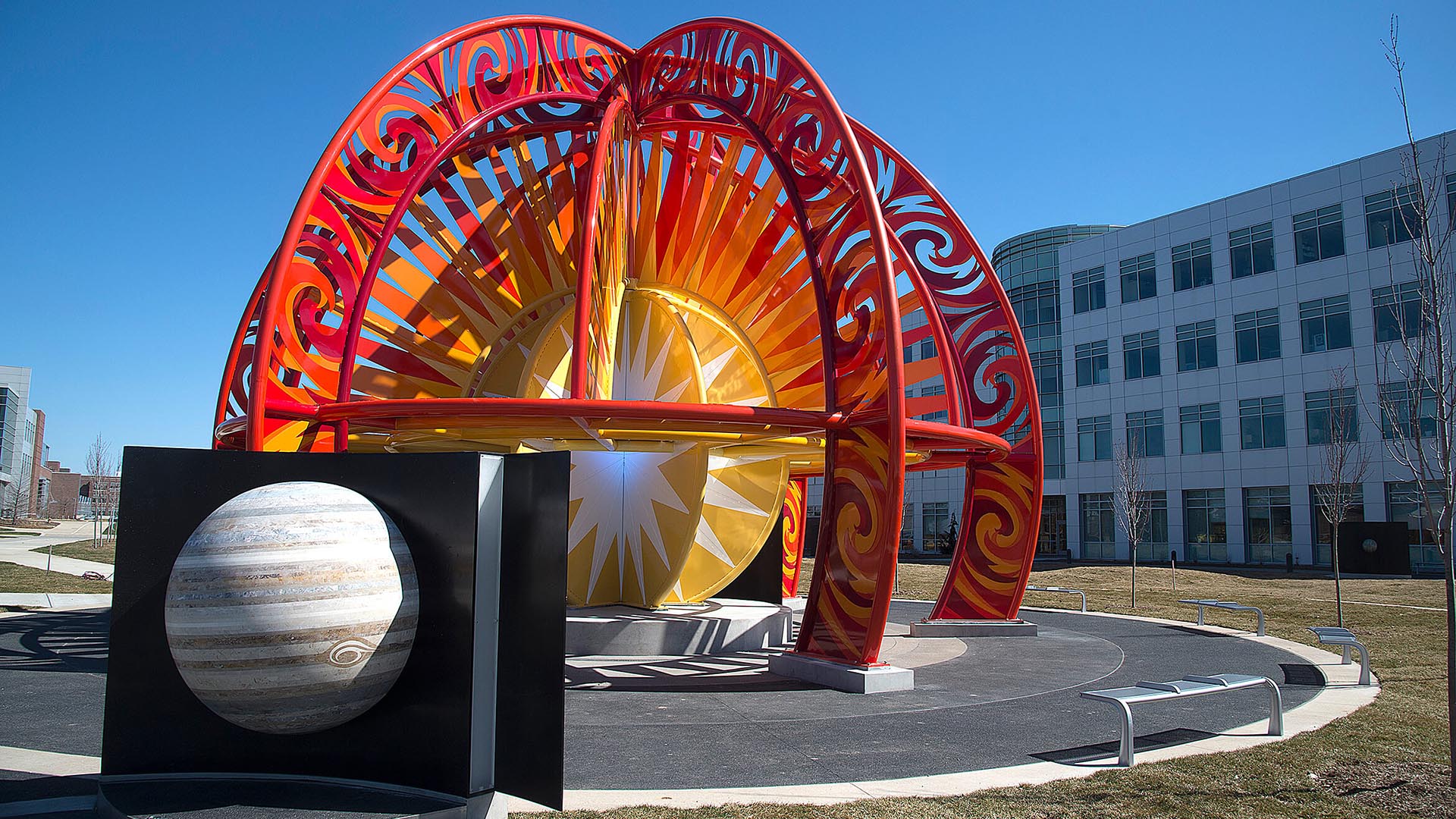
April 18, 2015
VOSS Model debuts
Purdue dedicates the VOSS (Visiting our Solar System) Model in Discovery Park District at Purdue. Named in honor of Boilermaker astronaut Janice Voss, the scale model of our solar system represents 5.4 million miles traveled in space for each foot visitors walk around the spiral.
Visit the VOSS Model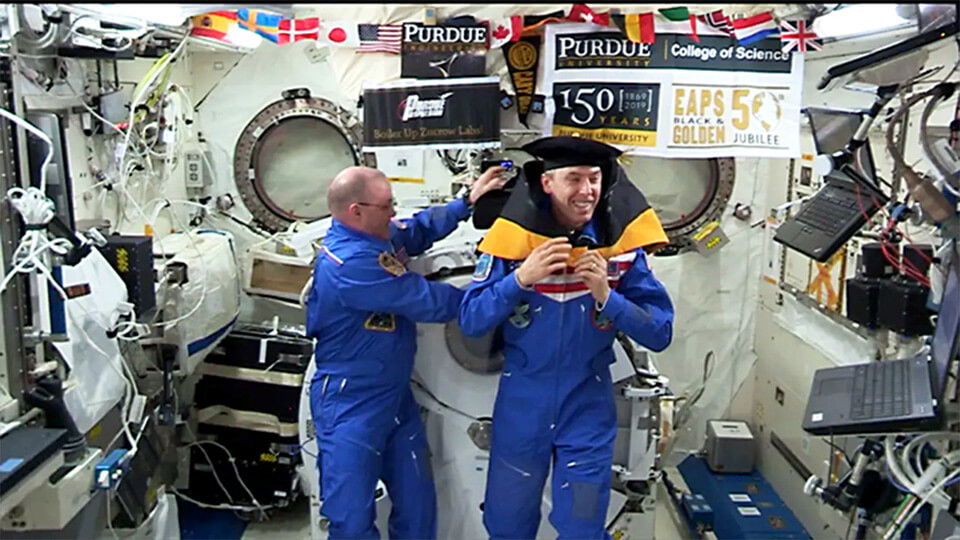
May 11, 2018
Honorary doctorate awarded aboard the ISS
Scott Tingle (MSME ’88) places the ceremonial hood on fellow Boilermaker astronaut Andrew Feustel as Feustel accepts an honorary Doctor of Science degree via satellite uplink from the International Space Station during Purdue’s spring commencement.
Drew’s journeyFeb. 22, 2019
First female commercial astronaut
Beth Moses (BSAAE ’92, MSAAE ’94) becomes the first female commercial astronaut on Virgin Galactic’s VSS Unity VF-01, where she became the first person in history to unbuckle and float around on a suborbital spaceflight. The mission also makes her Purdue’s first commercial astronaut.
Beth’s journey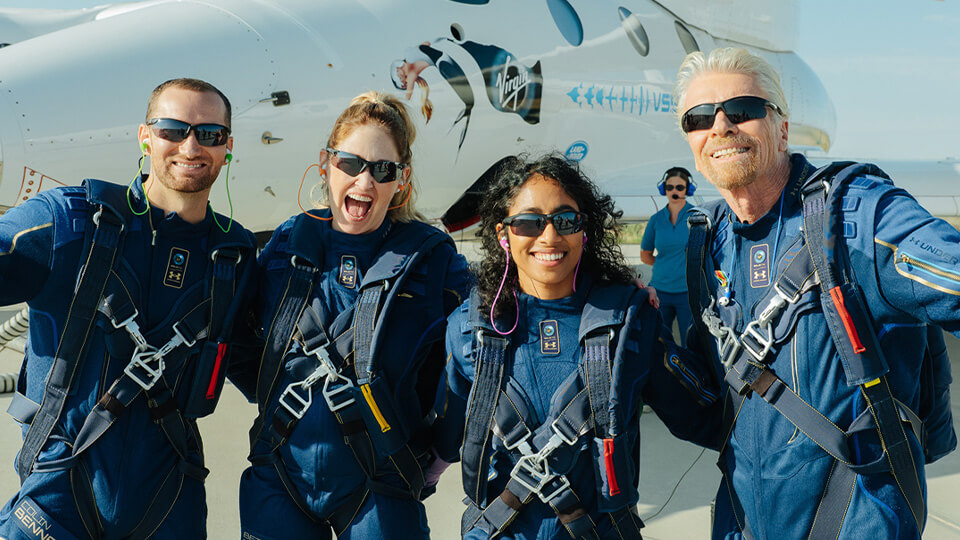
July 11, 2021
Moses, Bandla make fully crewed commercial spaceflight
Aboard Virgin Galactic’s Unity 22 flight, Beth Moses and Sirisha Bandla (BSAAE ’11) join Richard Branson as part of the first fully crewed commercial spaceflight.
Sirisha’s journeyOct. 13, 2021
Powers joins Captain Kirk in space
Audrey Powers (BSAAE ’99) and a crew that includes “Star Trek” actor William Shatner make the second human spaceflight of Blue Origin’s New Shepard spacecraft. Powers becomes the 27th graduate to join Purdue’s Cradle of Astronauts™.
Audrey’s journey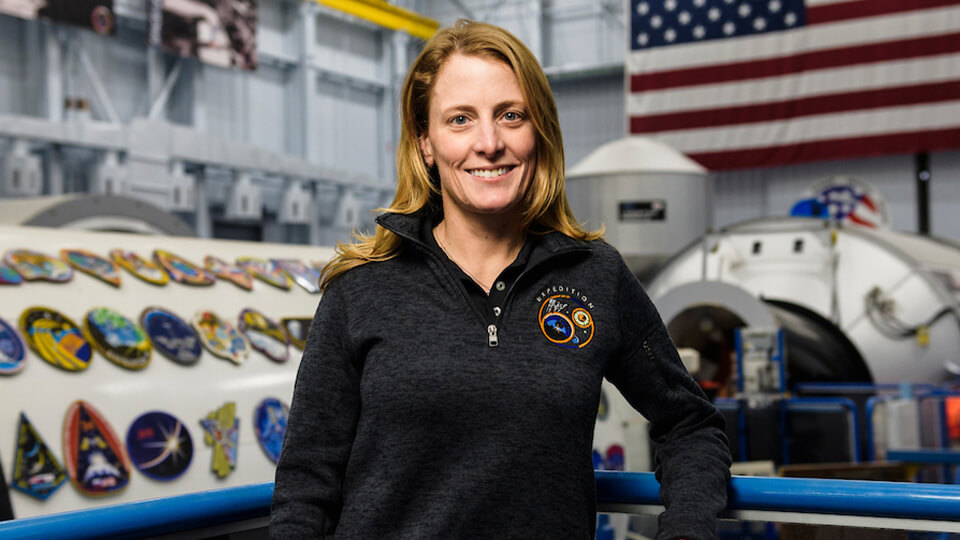
Sept. 15, 2023
O’Hara launches to ISS
Loral O’Hara (MSAAE ’09) launches aboard the Russian Soyuz spacecraft to the International Space Station as part of Expedition 69/70. O’Hara becomes Purdue’s third female NASA astronaut — and sixth woman graduate — to travel into space.
Loral’s journey
